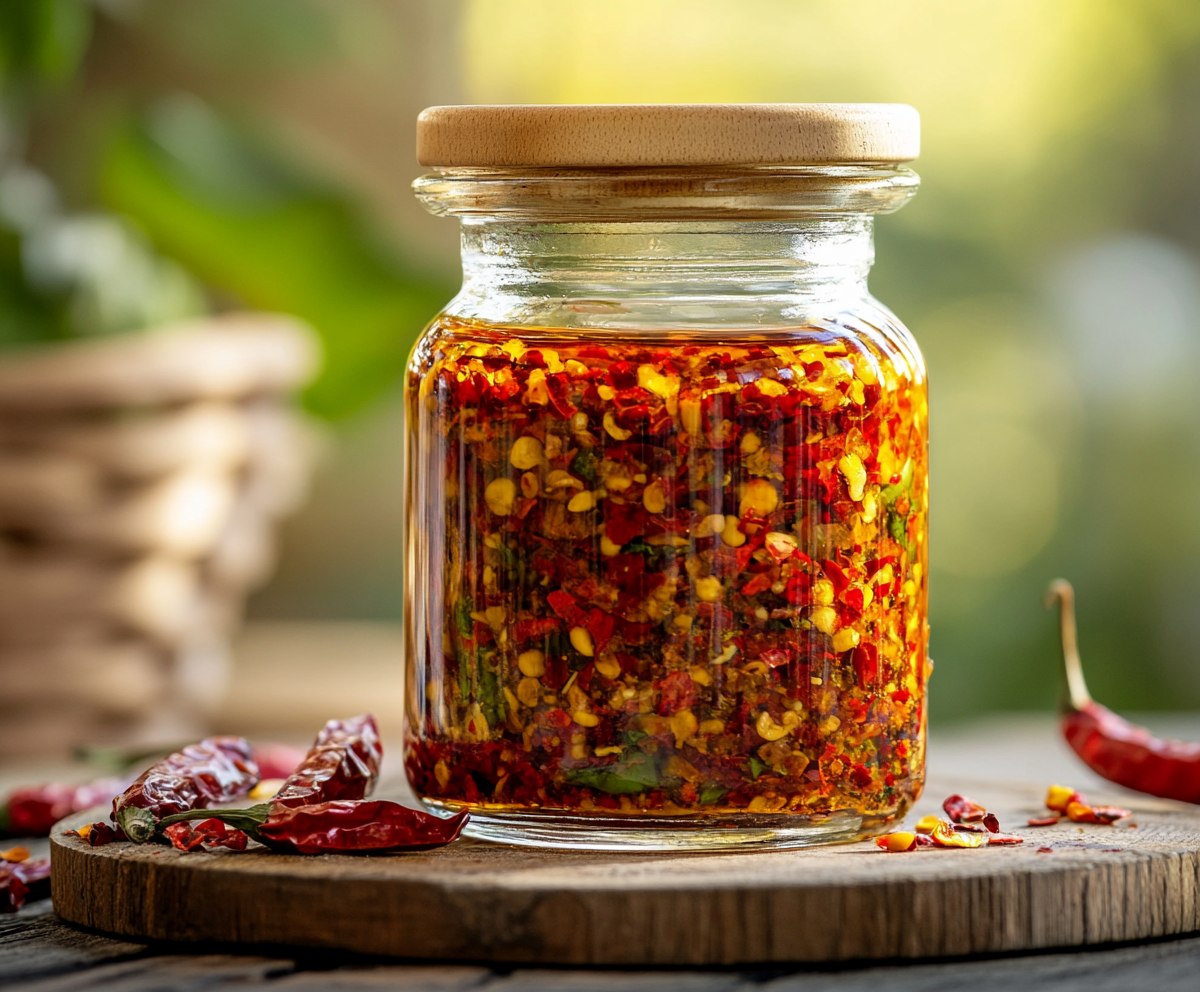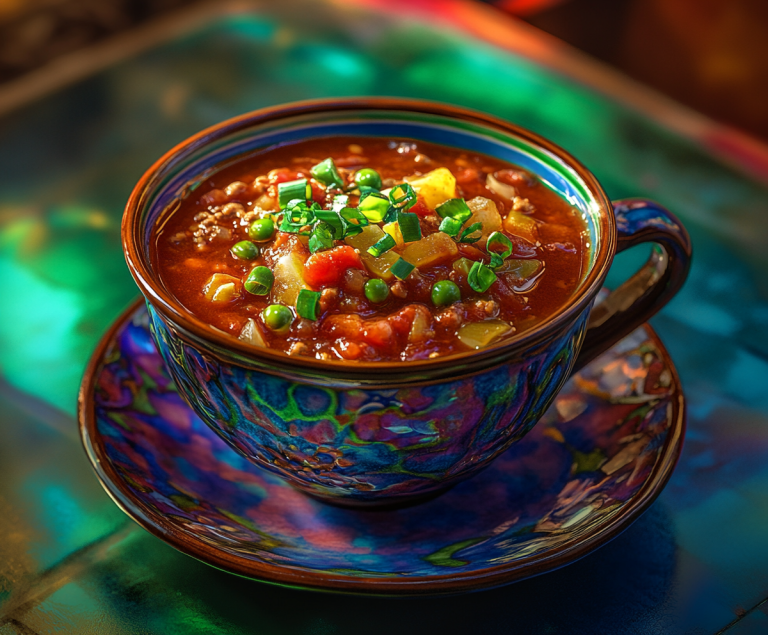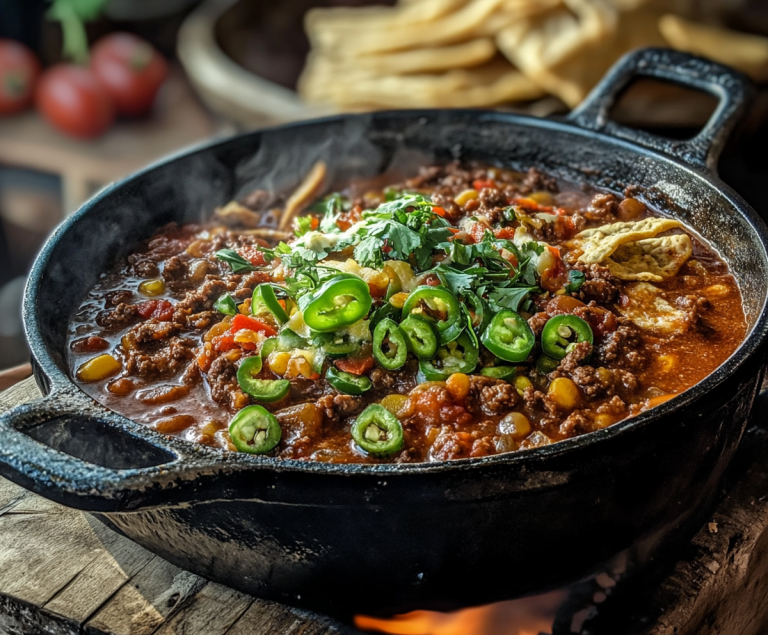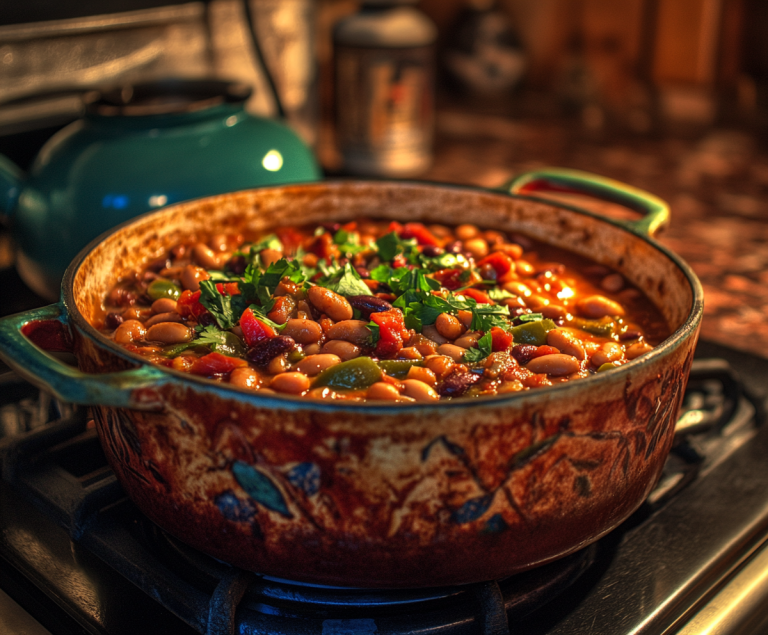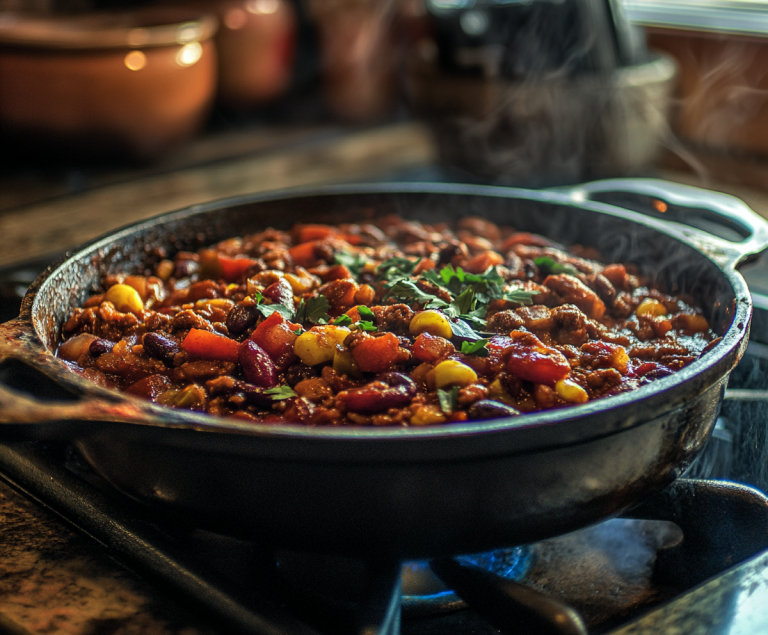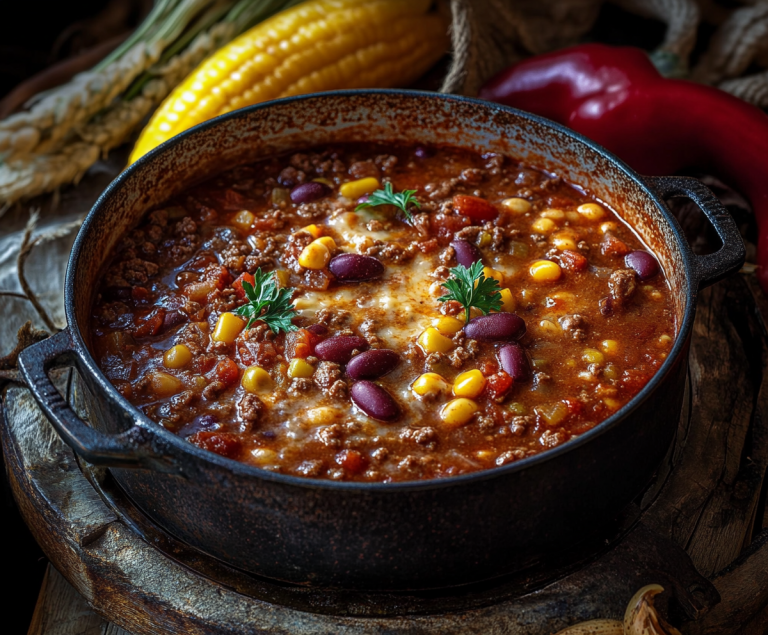Introduction
Chili oil is one of those magical ingredients that can transform the flavor of any dish. It is bold, fragrant, spicy, and deeply satisfying. Whether you love Asian cuisine or simply enjoy a bit of heat in your food, chili oil is something you will find yourself reaching for again and again. This fiery red oil is a staple in many kitchens around the world, especially in Chinese, Thai, and Korean cooking. But it is also becoming popular in Western kitchens because of how easy it is to use and how much flavor it brings.
If you have ever bought chili oil from a store, you might have noticed that the flavor is sometimes too harsh, too oily, or too mild. Many commercial versions use preservatives and artificial flavors. Making chili oil at home solves all these problems. You can control every element, from the type of oil and the level of heat to the spices and the aroma. It is quick, affordable, and incredibly rewarding.
In this recipe, you will learn how to make your own chili oil in under 30 minutes. The ingredients are simple and easy to find. The process is safe and beginner-friendly. You do not need any special equipment, just a saucepan and a heatproof jar. And the best part is that once you make it, it will keep for weeks, ready to be drizzled over noodles, rice, dumplings, pizza, and even scrambled eggs.
Let’s dive into the ingredients you will need to get started.
Ingredients Needed
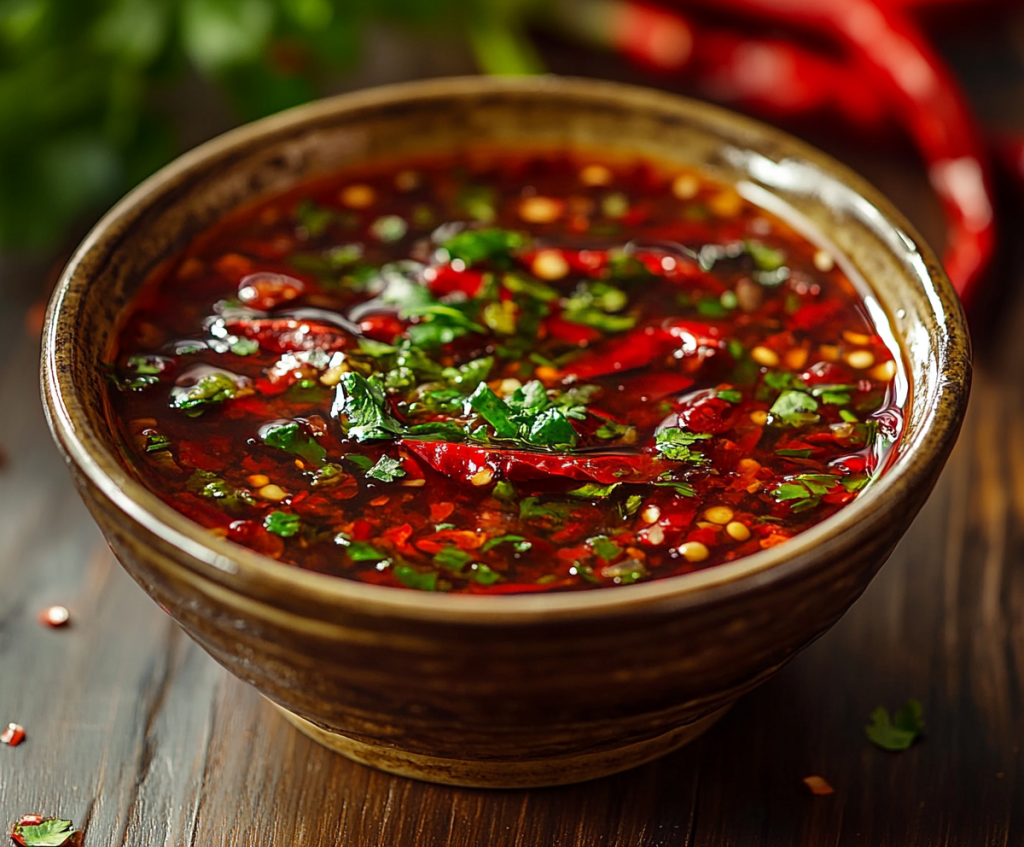
To make homemade chili oil, you only need a few key ingredients. The base is a neutral oil that gets infused with aromatics like garlic, ginger, and spices. Once the oil is full of flavor, it is poured over chili flakes to create a beautiful, spicy infusion. Here is what you will need.
Ingredients Table
| Ingredient | Quantity | Calories (Approximate) |
|---|---|---|
| Dried red chili flakes | 1/2 cup (25 grams) | 90 kcal |
| Neutral oil (vegetable or peanut) | 1 cup (240 ml) | 1920 kcal |
| Sichuan peppercorns (optional) | 1 tablespoon | 20 kcal |
| Star anise (optional) | 1 piece | 5 kcal |
| Garlic, sliced | 3 cloves | 13 kcal |
| Fresh ginger, sliced | 1 inch | 5 kcal |
| Salt | 1/2 teaspoon | 0 kcal |
Total Yield: About 1 cup
Total Calories: Approximately 2053 kcal
Per Tablespoon: About 128 kcal
Use fresh, high-quality ingredients for the best flavor. Neutral oils like canola, soybean, or peanut oil work best because they allow the spices to shine. You can also use olive oil, but the flavor may overpower the spices if you are not careful.
Step-by-Step Cooking Instructions
Making chili oil is easy, but attention to detail is important. A good chili oil is all about timing, temperature, and layering flavor slowly. Here is a step-by-step guide to help you make a flavorful batch every time.
Begin by measuring and preparing all your ingredients. Place the chili flakes in a clean, heatproof glass jar or bowl. Set it aside. Make sure your garlic and ginger are sliced evenly so they infuse the oil properly. If you are using Sichuan peppercorns or star anise, have them ready too.
Add the oil to a small saucepan and place it over low to medium heat. Add garlic, ginger, Sichuan peppercorns, and star anise. Let the oil warm up slowly. The goal is to infuse the oil, not to fry the ingredients. Watch closely. The garlic should turn golden brown, not dark brown. This process usually takes about 10 to 15 minutes.
Keep an eye on the temperature. If you have a thermometer, aim for around 225 to 250 degrees Fahrenheit. If you do not, a good sign is gentle bubbling around the garlic and a fragrant aroma. Do not let the oil smoke. If it starts to smoke, remove it from heat immediately.
Once the garlic is golden and the oil is infused with flavor, remove it from the heat. Use a fine strainer or a mesh sieve to pour the oil into the bowl of chili flakes. Do this slowly and carefully. The hot oil will sizzle when it hits the chili flakes, releasing all their flavor and color.
Stir in the salt right away while the oil is still hot. This helps it dissolve evenly. Let the mixture sit for about 20 minutes to cool.
Once cooled, transfer the chili oil into a clean, airtight jar. You can leave the chili flakes in the oil for a stronger flavor. Store at room temperature for up to two weeks or refrigerate for up to a month. Always use a clean spoon when scooping from the jar to keep it fresh.
Tips for Customizing the Recipe

The best part about making chili oil at home is the freedom to experiment. Here are a few tips to help you customize your recipe.
If you prefer mild heat, reduce the amount of chili flakes or mix them with sweet paprika. This creates a beautifully red oil with less burn. For a spicier kick, use Thai chili flakes or crushed bird’s eye chilies. You can even grind whole dried chilies in a blender for a fresh batch of flakes.
To add more complexity, try different spices. You can toss in cinnamon sticks, bay leaves, cardamom pods, or cloves while the oil heats. Toasted sesame seeds or peanuts added at the end can give the oil a nutty depth. You can also add a few drops of soy sauce or black vinegar after the oil cools for extra umami.
If you want a crunchy texture, stir in fried garlic or shallots after the oil has cooled slightly. These little crispy bits add amazing flavor and contrast.
Always remember to test small batches when trying new ingredients. Taste as you go and adjust the salt or spice level to your liking.
Nutritional Information
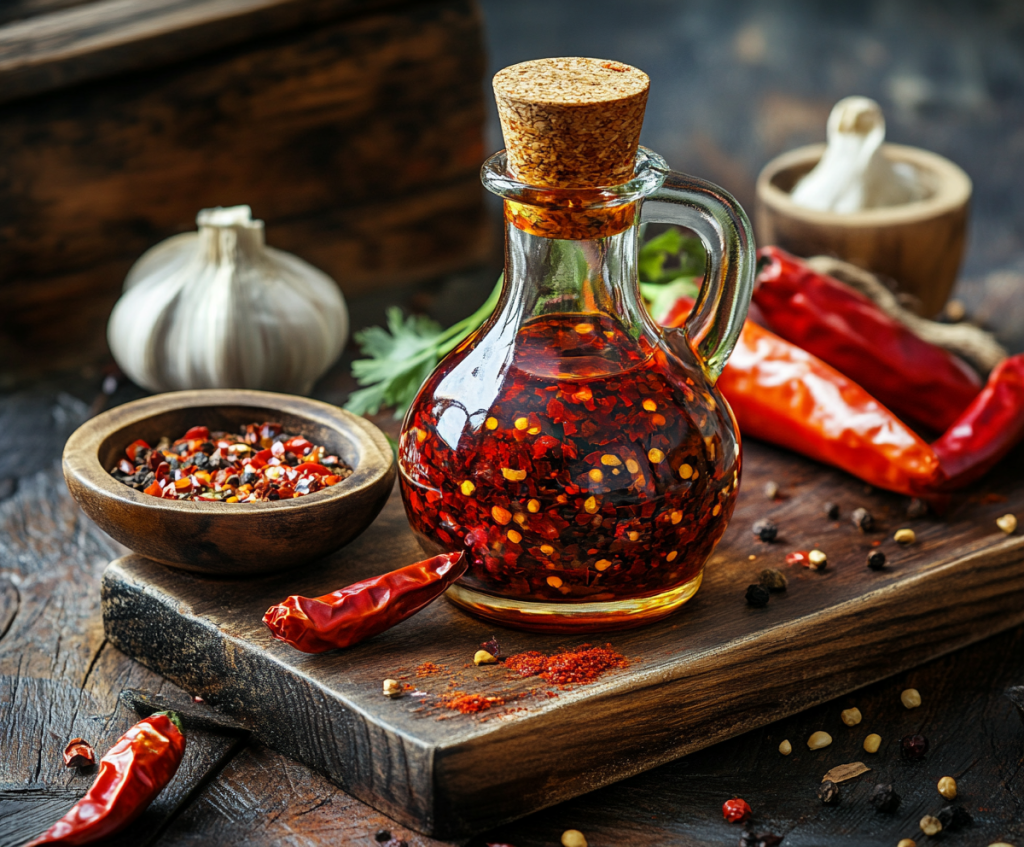
Chili oil is packed with flavor but also high in calories because of the oil base. Here is an approximate breakdown per tablespoon.
| Nutrient | Amount |
|---|---|
| Calories | 128 kcal |
| Total Fat | 14 grams |
| Saturated Fat | 1.5 grams |
| Carbohydrates | 1 gram |
| Protein | 0 grams |
| Sodium | 30 milligrams |
While chili oil is not something you would eat by the cup, even a small spoonful adds a lot of richness and heat. Use it in moderation if you are watching your calorie or fat intake. But if you are just looking for flavor, a little goes a long way.
Serving Suggestions
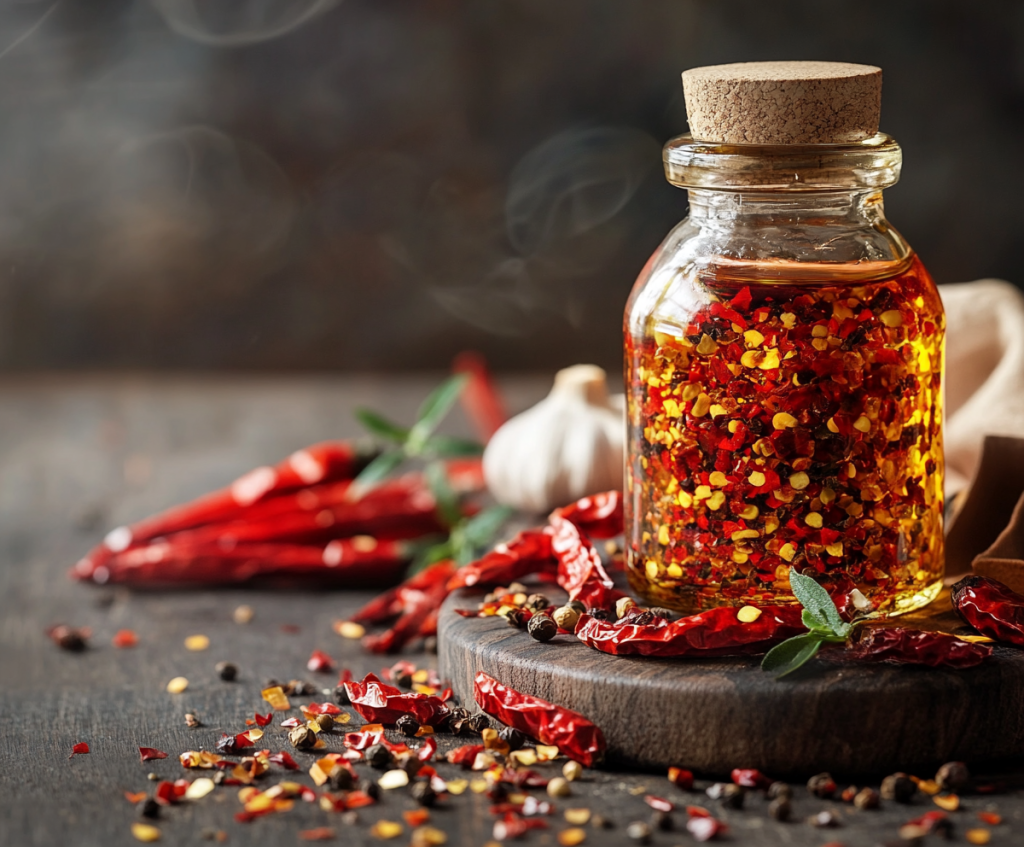
Chili oil is one of the most versatile condiments you can keep in your kitchen. It works with so many dishes and adds instant flavor to bland meals. Here are a few ideas for how to use it.
Drizzle it over steamed dumplings or pan-fried potstickers for an instant kick. Spoon it onto hot noodles or stir it into ramen broth. Mix it into fried rice or scrambled eggs for a spicy twist. Use it as a dipping sauce for spring rolls, bread, or even pizza. Add a spoonful to soups, stews, or roasted vegetables to boost flavor. It also makes a great marinade for grilled meats or tofu.
The possibilities are endless. You will find yourself reaching for your jar of chili oil every time your meal needs a bit more excitement.
Conclusion
Homemade chili oil is not only simple to make but also incredibly rewarding. With just a few ingredients and a bit of care, you can create a bold, spicy condiment that enhances almost any dish. It is easy to customize, fun to experiment with, and far superior in flavor to most store-bought versions. Once you make your own, you will never go back.
This easy recipe is perfect for beginners and pros alike. So gather your ingredients, set aside a little time, and get ready to enjoy the rich, spicy goodness of homemade chili oil. Your taste buds will thank you.

